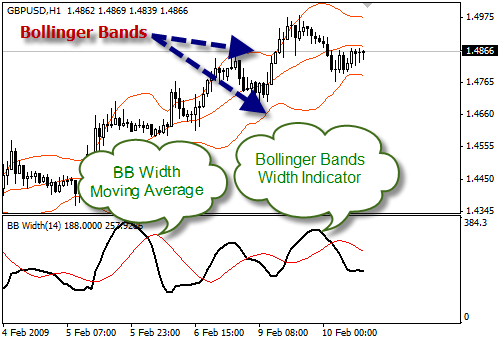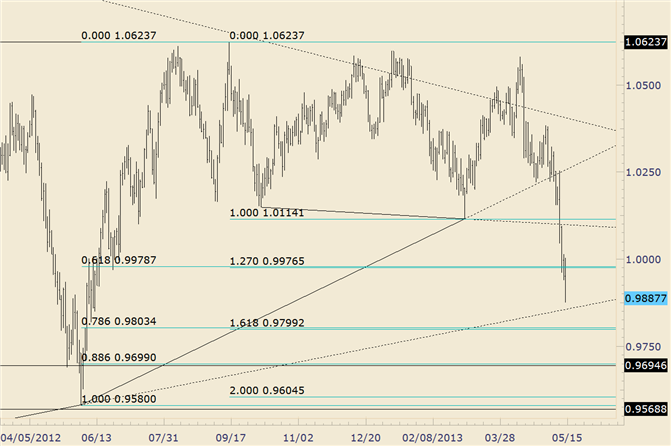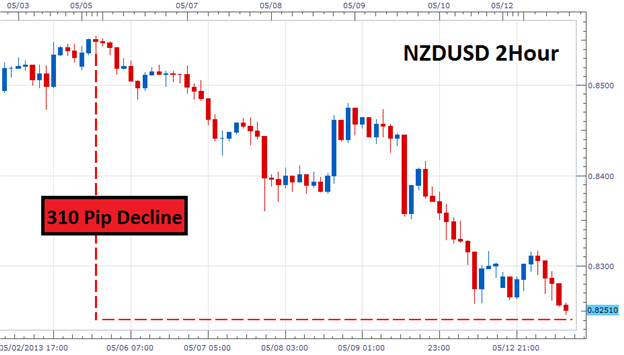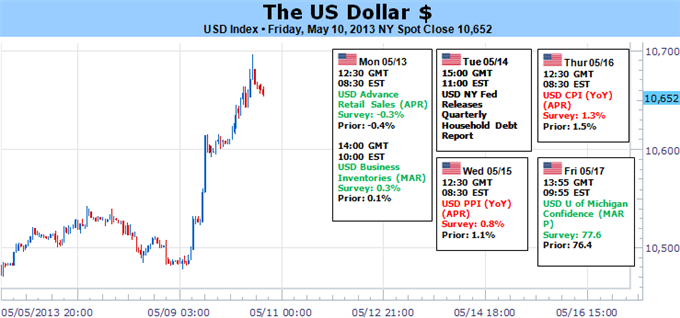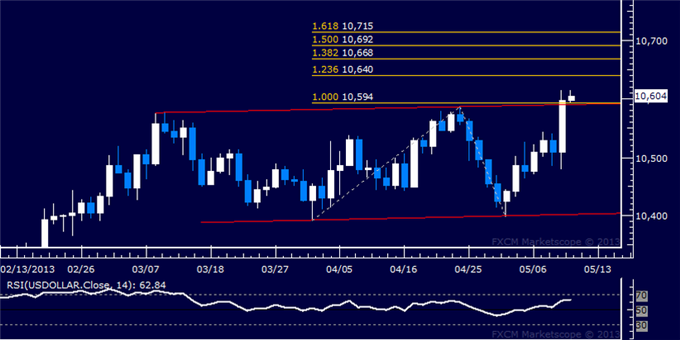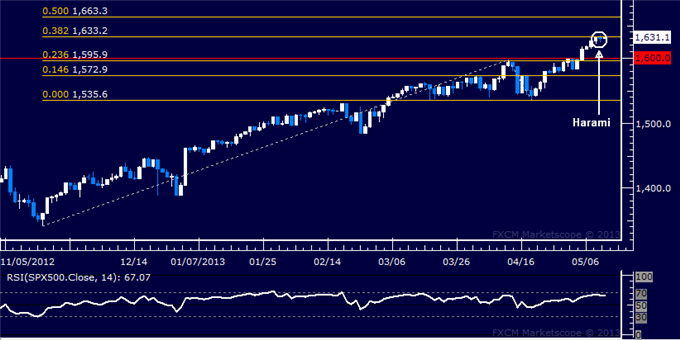A market will rise until it doesn’t. Both
fundamental and technical debate has raged over the months and years
about the legitimacy of risk appetite’s rise from the ashes back in
2008/2009. That conversation only grows more intense as record highs for
benchmarks like the S&P 500 scale record highs while market yields
scrape record lows, growth has proven inconsistent and market
participation holds to anemic levels. The external element that fills this wildly divergent gap between price and potential: stimulus.
While the risk-sensitive (stimulus-dependent)
capital market’s climb is one fundamental abnormality that is now a
common topic of conversation, a relatively newer stimulus-generated
disparity has gained far more interest as of last – the positive correlation between risk appetite and the US dollar’s performance.
Traditionally, the favored safe haven for the FX world, we expect the
greenback to fall while even an ill-deserved risk run is underway.
With the introduction of speculation surrounding Fed ‘tapering’, we have likely lit the fuse for a reversal from one of these two assets. Why? Either the Fed starts to temper its support and risk built on a constant escalation of outside support falls apart will collapse.
Otherwise, the dollar’s recent surge to near three-year highs on
expectations of an immediate QE3 taper will prove overdone. So, which of
these measures of market appetite have over-run their reasonable
bounds? (As market conditions change, so should your strategy)
The lynchpin is sentiment itself. If the low-volume,
high-reach speculative build up holds steady (it may not even have to
post progress); the US dollar will take a spill. Alternatively, if a
shock of fear shoots through the market, the greenback will turn from
‘overbought’ to bull trend immediately while the record high S&P 500
will dive over a cliff.
While wait for the fundamental spark to settle this
debate, here are measures that show just how overbought the dollar and
S&P 500 are.
The US Dollar (Dow Jones FXCM Dollar Index)
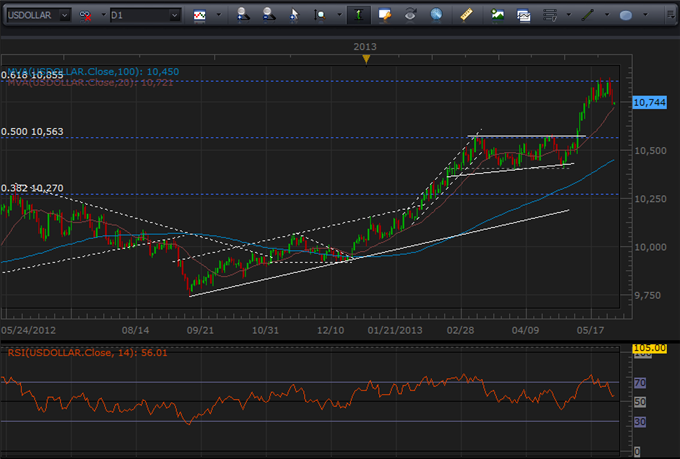
Charting Created by John Kicklighter usingMarketscope 2.0
One of the more recognizable measures of overbought markets is the simple RSI indicator. Above, you see that the standard 14-day RSI has crossed back below 70, so it has crossed down from its ‘extreme’ reading.
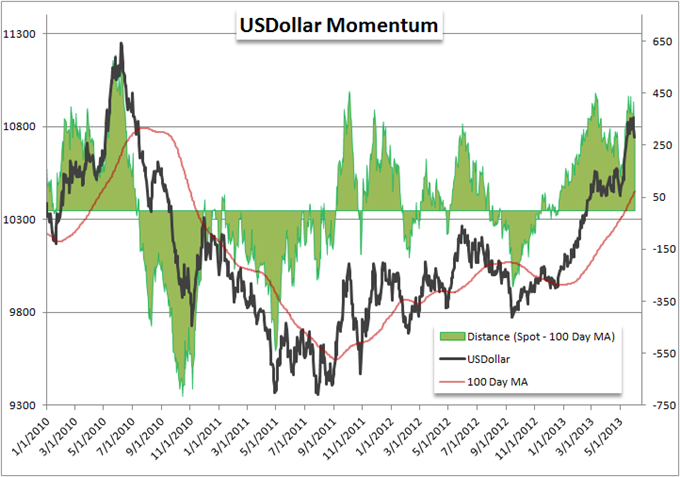
Next we have a different type of read. This uses the
100-day moving average to measure momentum. The green reflects how far
above or below USDollar has moved beyond its average. The further it
stretches, the greater the potential that the market is overdone.
Recently, we have started to pull back from a 450 point spread – the
peak back at the beginning of the year and July 2010.

